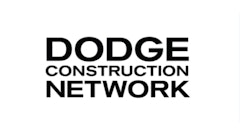I’ve been in sales since I was 15. My start was with the now-defunct men’s clothier Richman Brothers and my pay was based on minimum wage and commission. I did rather well compared to friends who had the traditional jobs at fast food restaurants in the 70’s. Why? Because I learned early on it is much easier to sell things to customers on a regular basis than always going out and finding new customers!
Soon after I started I created an index card file “database” with customers’ names, addresses, phone numbers and sizes. I also noted what they recently purchased and what trends they liked. My coworkers teased me about that corny card file and green box but I really didn’t care. When new merchandise came in I would call the appropriate customer -- and for the clients that were difficult to fit I held garments in their size. In my opinion I offered them excellent customer service!
Well folk’s, things really haven’t changed that much in sales over the last 35 years. Your best customers should be the ones who keep coming back. Your job is to treat them well so they wouldn’t think of going anywhere else.
I have adapted these principals to the pavement industry, first as material supplier and now as a business developer. In this article we are going to identify some of the things you can do to create “raving fans.” Raving fans not only patronize you and your offering but they recommend you to others. If you do your job well you will have repeat customers and a great referral system too.
1.Pick the Right Customer. Let’s begin by understanding that you have to pick the right customers to have repeat business. Prospects and clients that have multiple locations or very large properties are possible candidates. The reason I say “possible” is because you have to find clients that are the right fit for what you do. For example if you are a high-quality producer of pavement maintenance services then you won’t find huge success seeking out clients who always buy on low price. To get those jobs you would always need to be the lowest price and the other benefits you offer wouldn’t make enough of a difference to get you every order.
As a high-quality producer your customer is the one who appreciates that you show up on time, fill all cracks without leaving a bunch of drips or dribbles and is willing to pay for a sealcoat application that has the right amount of solids and is not over-diluted with water. Part of your job is to point out these differences in quality without bashing the competition.
2. Follow Up, Follow Up, Follow Up! Contractors that offer lesser quality will not satisfy those clients’ expectations over a long period of time. So you must continue to follow-up even when you are not awarded a project you were quoting. When I coach salespeople new to the industry that don’t have a “book of business” built I remind them that proper follow-up is essential in developing relationships with prospective clients.
3. Communicate the Way Your Client Prefers. Back in the days of selling clothes we had two basic forms of communication: U.S. Mail (snail mail today) and the land-based telephone. Today you have numerous tools that include e-mail, cell phones, voice mail, client portals and even social networking. Why not ask your prospects and clients what forms of communication they prefer? You’d be surprised at how much this will improve response time.
4. Keep a Customer File. Today high-tech can play a huge role in your tracking and monitoring prospects and clients. My old card system has been replaced by CRM (Contact or Customer Relationship Management) software. There are a range of programs from basic and free to those that have sophisticated customized sales cycles and phone support to help enter data while you are out of the office.
CRM along with e-mail management and accounting software programs assist in all functions of communicating with clients and in understanding how much work you proposed vs. how much you were awarded. Did some work get done by the competition or perhaps wasn’t contracted at all due to budget restraints?
5. Develop Your Customers’ Trust. In recent research the most important trait by far with customers (and employees) is trusting the person they are working with. Some surveys rate trust as high as 80% as the most important factor. To retain clients you have to deal honestly and fairly at all times. It is impossible to place a high enough value on trust and honesty in customer retention.
6. Price Sensitivity Is Back. In this recent economy you might have found yourself in a position where a longtime client has left you for a much lower price. This should not surprise you. Most contractors raise prices gradually over time to compensate for higher labor and material costs as well as to make more profit. Isn’t it funny that you will quote a new prospect that you have never done business with a very sharp price to get their business while your bread-and-butter clients pay substantially more? If a longtime client leaves you for a lower price but does not receive the high-quality product and service you provided then you have a chance to get them back. If the competition is on par or even better than your company then getting a customer back can be very challenging.
Keep in mind that in this tougher business climate customers are more price sensitive. Nobody likes to lower prices! I suggest you spend time listening to what your current customers really want. Ask if they are willing to sacrifice something in the application process since they expect you to lower your price. Attempt to openly discuss their budget allocations and how you can meet them. If your best clients are price shopping ask to analyze the competitions’ proposals. If necessary the buyer can blackout the prices and allow you to compare the scope of work.
Recently a contractor client of mine was going to lose a job to a contractor who provided a significantly lower quote. However, after reviewing the proposals one-on-one with the customer and asking a few questions, the customer realized the materials from the “low bid” contractor were inferior to those to be used by my contractor client. My client retained the project…and he now understands that more effort is required on his part to combat the low-price contractor.
7. Build Your Customer Relationships. Customer retention requires relationship building. This means more than just interacting with prospects and clients when there is work to be done. Many of my clients, for example, are also my personal friends. Over the years we have found things of common interest and care about each other and our families. Perhaps we would not have developed the friendships if it wasn’t for the business interactions, and in many cases the business aspect is now just a side benefit. Remember, people like to do business with people they trust … and like.
8. Provide Quality and Service …“Plus One.” Earlier in this article I mentioned a term “Raving Fan” which I borrowed from the book of the same name. There are several steps to creating “Raving Fans” and without giving all the nuggets the book has to offer away I will tell you that you have to focus on what you are really good at and do it well every day. You then must offer that quality and service “plus one.” This means you are always striving for improvement and going at least one-step beyond customer expectations. This might require you to look at the services you provide, to look at each job as a challenge, and perhaps to find a way to create additional worth. Creating additional worth might require you to “value engineer” a scope of work different from what the customer was looking for. Instead of trying to compare apples to apples try building the better mouse trap.
Let me give you an example: Suppose your client is seeking bids on a patching project that is 12,000 sq. ft. of 4 in. remove-and-replace by saw cutting damaged areas and replacing asphalt in two lifts. The total area consists of 25 repairs that average 500 sq. ft. You are not sure the depth of the existing asphalt because there has been at least one overlay done since the original installation.
To save time and insure you meet the depth requirement you might explain to the client that milling the areas is a good alternative. If the R & R areas come out at 3 in. you will need to excavate an additional inch to meet spec. On the other hand if the R & R comes out to a depth of over 5 in. then you will either need to add stone (an extra step) or additional asphalt (an extra cost). Just an additional inch over 12,000 square feet would require an additional 74 tons. Multiply this by your average cost of hot mix and you can see that you will either make much less profit if you bid for exactly 4 in. or you will be priced too high if you try and compensate for possible extra mix. Value engineering the project to 4 in. mill and replace helps both you and the end user make sure they are getting the right amount of mix for the right price.
Most clients are receptive to this type of “out of the box” suggestion. It will make you appear smarter while keeping everyone’s best interests in mind. When customers see that you are putting yourself in their shoes it creates a teamwork atmosphere. And isn’t that what your overall goal is, creating a teamwork and partnership approach with good clients?




















